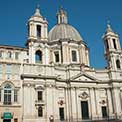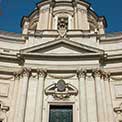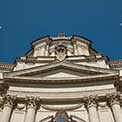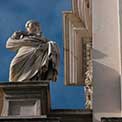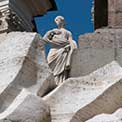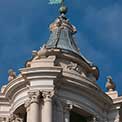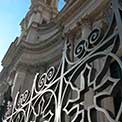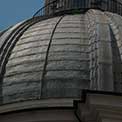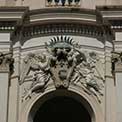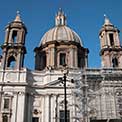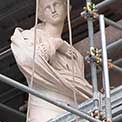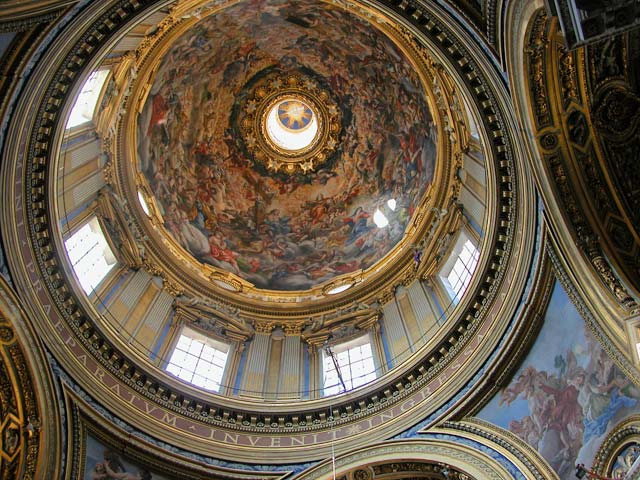
This church is built on the spot where St Agnes is said to have been publicly exposed after her torture, and to have struck with blindness the first person who saw her degradation. An excellent example of the Greek cross plan, it was entirely rebuilt in 1642 by the princes of the Pamfili family, from the designs of Girolamo Rainaldi, and is generally regarded as his chef d'&uvre. The facade and the cupola are the work of Bernini. The former is flanked by campanili, rising in two stages above the balustrade, and in some features recall those of St Paul's Cathedral, but their contour is hardly so elegant. They are circular, with four groups of coupled composite columns. The lantern surmounting the central cupola is very graceful, the corner columns imparting an interesting outline to it.
Internally Sta Agnese Navona is rich in varied marbles, all disposed with that taste so common in works of its period, the columns supporting the four great arches of the dome being composed of red Cotanella.
The arm containing the high altar is rectangular, and the columns of its reredos are Composite ones of dark green marble. Each of the altars in the compartments formed by the four arms of the cross has a reredos from the chisel of some distinguished sculptor, and another work of the same kind, but of higher pretensions, by Algardi, is in the subterranean chapel. The same criticism may be passed upon all of them, that they overstep the modesty of sculpture. They aim at the illusions of perspective, and light and shade. In short, they try to be pictures, and cannot; and form a sort of hybrid in art between sculpture and wax-work. The cupola was painted by Cira Ferri and his pupil, Corbellini, the lunettes by Baciccio. The tomb of Innocent X. over the entrance is by Maini. By Algardi is the bas-relief over the altar in the subterranean chapel, the supposed site of the martyrdom of St Agnes. In a recess behind the high altar, entered from near the chapel of Sta Cecilia, is the sepulchral chapel, erected about half a century ago, of the Princess Mary Talbot Doria, our countrywoman. She died in 1857, and for many years was one of the brightest ornaments of the aristocratic circle in her adopted country. The handsome monument which covers her remains was the work of Tenerani.
THE CATHEDRALS AND CHURCHES OF ROME AND SOUTHERN ITALY By T. Francis Bumpus.
LONDON - T. WERNER LAURIE - CLIFFORD'S INN

